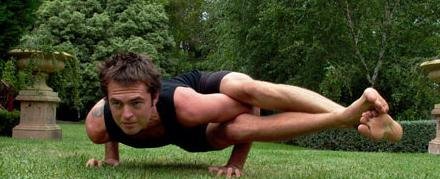
Stress, hormonal changes, and self-development are among the reasons why Women should stay healthy. A Woman's capability to handle stress, whether emotional or physical, highly depends on her health. The hormonal changes associated with Menopause, Pregnancy and Menstruation can cause Women to suffer from Premenstrual Syndrome, Menstrual Cramps, headaches, and other symptoms. She also needs to stay healthy to be able to cope with Pregnancy and Menopause, together with the symptoms. Women have also been under the pressure to look good over the centuries. Nowadays, a large number of Women would do almost anything to be thinner.
Yoga, an ancient science, can help Women cope with health issues and help them develop the state of their body and mind. It can help alleviate the pain that goes with Menstruation, manage stress, and ensure an easier delivery among other benefits. Yoga poses are also designed to tone and exercise the muscles of the body to eliminate excess fat, and make it more flexible and stronger. The following are common health issues and changes that Women undergo and the Yoga poses that can help them through:
Meditation
What is Meditation?
To understand what true meditation is, consider a lake. When the surface of a lake is still you can see to the bottom clearly. When the surface is agitated by waves, this is impossible. The same is true of the mind. When it is still you may see and experience inner calm.
Meditation involves a subtle act of "letting go" - and it is not something that you can learn through sheer hard work . Some women benefit greatly from this kind of preparation , where as others can slip into meditative state comparatively easily without it .
When & where to Meditate?
If meditating inside, choose a warm space, free from noisy distractions and clutter. If outside, choose a place where you feel safe and relaxes, and there is little extraneous activity to disturb you. You can practice meditation at any time of day or night, but try to the get into a daily routine to make it easier to train your mind.
Comfortable Cross legged Position:
A comfortable sitting pose is very important if you are to meditate properly without distraction. Sit with your legs crossed and your spine erect. You should hold your shoulders straight, but relaxed. Children find this pose easy, but adults may need some assistance. Place a cushion under the buttocks to relieve any tension in the lower back.
Hand Positions:
The following positions are all suitable for meditation. Aim to hold your hands as comfortably as possible. This ensures that you remain relaxed while meditating . Resting your hands on your knees or in your lap also helps to hold the spine straight and shoulders erect.

Hands cupped - Place one hand on top of the other, palms upwards, and lay them in your lap.
Hands clasped - Clasp your hands gently by interlocking your fingers,. Lay your hands in your lap.
Chin Mudra - Use your thumb and first finger to form a circle. Rest your hands on your knees.
Regulate your Breath:
Breathing is a key element in meditation and concentration. Begin with 5 minutes of deep abdominal breathing, to provide your brain with plenty of oxygen. Then slow your breathing right down, keeping it rhythmical, inhaling for 3 seconds and then exhaling for 3 seconds.
If your mind Wanders:
At first you will find that your thoughts tend to jump about. Do not try to force your mind to be still, as this will set additional brain waves in motion, hindering your meditation. Allow it to wander, and then gently command it to become calm. Focus your energy and your attention inwards by concentrating on an uplifting mental image.




